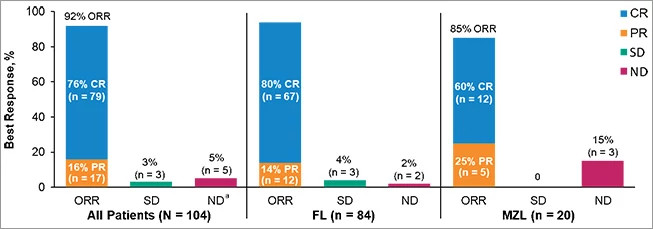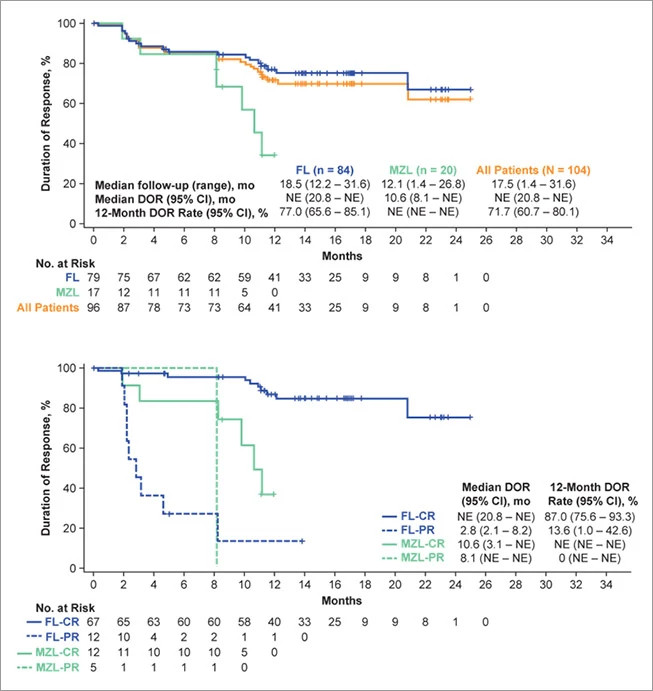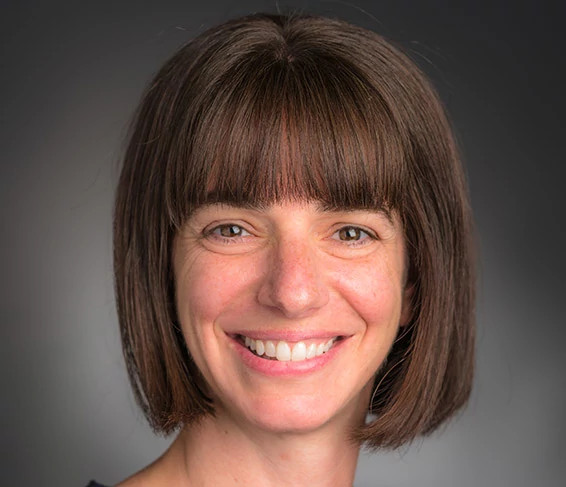While many patients with diagnoses of follicular lymphoma (FL) and marginal zone lymphoma (MZL) will live 1 to 2 decades and die with their disease, not from it, a subset of patients will cycle through treatment options relatively quickly, and for all patients, complete response (CR) rates and remission durations decrease over time. For these patients, FL and MZL ultimately represent life-threatening diseases whose only potential cure is allogeneic stem cell transplantation. Transformative therapies are needed for these high-risk and multiply relapsed patients.
The phase 2 ZUMA-5 clinical trial investigated axicabtagene ciloleucel (axi-cel), an FDA approved autologous anti-CD19 directed chimeric antigen receptor (CAR) T-cell therapy for aggressive B-cell non-Hodgkin lymphoma (B-NHL), in patients with relapsed/refractory indolent B-NHL. All patients had at least two prior lines of therapy, including an anti-CD20 antibody and an alkylating agent. A total of 151 patients had T-cells collected, and 146 were treated, including 124 patients with FL and 22 patients with MZL. This was a high-risk group of patients: two-thirds received 3 or more prior lines of therapy; more than half had stage IV disease, high tumor bulk, and/or progression within 24 months of their first chemoimmunotherapy regimen; and one-quarter relapsed after prior autologous transplant.
The overall response rate (ORR) was 76% and the CR rate was 76% among FL patients with at least 12 months and MZL patients with at least 1 month of follow-up; ORR and CR rate was higher in the FL cohort (Figure 1). Responses were seen regardless of high-risk patient and/or disease factors, and responses were durable with 72% of FL patients maintaining their response at 12 months of follow-up (Figure 2). Follow-up for the MZL cohort was too short to draw any conclusions. Importantly, safety for all patients appeared similar to that seen in aggressive B-NHL, but was better in FL patients compared with MZL. Twenty-two percent of patients with FL did not experience any grade CRS and only 6% experienced grade 3+ CRS; 56% of FL patients experienced neurotoxicity but this was only grade 3+ in 15% of patients. Median time to onset for CRS was more delayed in all patients compared with aggressive B-NHL (4 days compared with 2 days), and this coupled with the more favorable safety profile may lend this therapy to outpatient dosing for FL patients.
Available third-line therapies for FL include inhibitors of phosphoinositide 3-kinase (PI3K), which yield CRs in fewer than 10% of patients and are associated with median progression-free survival (PFS) of only 10-12 months. Anti-CD19 CAR T-cell therapies appear to achieve higher response rates compared to these alternative agents, including for the highest risk patients. Moreover, as an immunologic approach to these diseases they offer hope of cure for patients without other standard curative options. I believe the question is not will CAR T-cells cure indolent B-NHL, but rather how many patients will it cure.


Find more information on our program's participation at ASH 2020.
